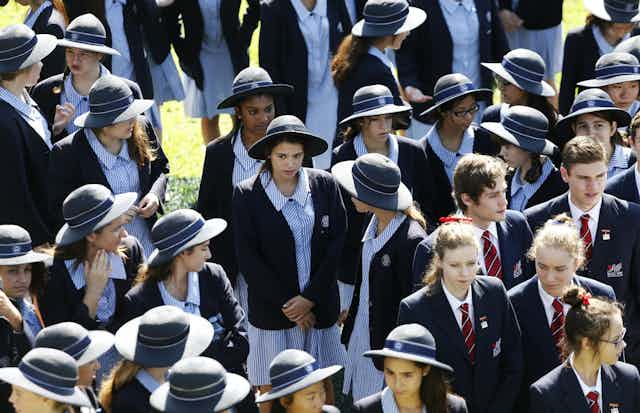A report released by UNICEF ranked Australia 24 out of 37 participating countries in education equality.
It is the latest evidence of a widening gap in educational outcomes between the most and least advantaged students.
The federal education minister, Simon Birmingham, has made a point of uncoupling school funding from education outcomes since coming to the role in last September’s cabinet reshuffle. He has argued consistently that more money does not lead to better outcomes.
In a recent address to the Independent Schools Council of Australia, Birmingham argued:
“Often the term needs-based funding is used as a proxy for arguments for more funding in totality.”
Instead, his focus is on the government’s Students First policy. This emphasises school autonomy, parent engagement, teacher quality and the curriculum.
Does money matter?
Is the minister correct in arguing that money doesn’t really matter?
There is no simple answer to this, because improving educational outcomes for all Australian students is not a simple issue with a single solution. However, one thing is clear: widening inequality is at the centre of the problem.
Despite being labelled a high-quality education system, Australia demonstrably has an equity problem.
A significant research review last year found that:
Cumulative political compromises have left Australia with a hybrid school system which is inequitable and unsuited to Australia’s changing social and economic circumstances.
A recent report from the Grattan Institute found significant gaps between students from different educational backgrounds, which widen across the years of schooling. The report authors said:
Bright kids in disadvantaged schools show the biggest losses, making two-and-a-half years less progress than students with similar capabilities in more advantaged schools.
The major factors of educational disadvantage include Indigeneity, English language proficiency, remoteness and disability. Many children, such as those in care, have multiple, compounding factors of disadvantage.
Research indicates that a strong correlation exists between social disadvantage and lower educational outcomes.
Furthermore, Australia has one of the most segregated schooling systems in the world, with the majority of disadvantaged students in public schools.
Data from the Organisation for Economic Co-operation and Development (OECD) demonstrate that a focus on equity is necessary as:
Disadvantaged schools tend to reinforce students’ socioeconomic inequalities. This represents a double handicap for disadvantaged students, since schools do not mitigate the negative impact of the students’ disadvantaged background and, on the contrary, amplify its negative effect on their performance.
In the results for the 2012 Program for International Student Assessment (PISA), the difference between Australian students in the top socio-economic quartile and the bottom quartile was equivalent to about two-and-a-half years of schooling.
The gap is similar between non-Indigenous and Indigenous students, and between students in the Australian Capital Territory and Northern Territory.
The narrative of decline in international rankings might be a concerning one, but the deeper concern is that we have a system where the least advantaged continue to be locked out of access to high-quality educational opportunities.
Needs-based school funding is essential
Birmingham is correct when he argues that:
While funding matters, what you do with it matters even more.
Increasing targeted needs-based school funding is an essential but not sufficient condition. There also needs to be a compound approach to resourcing at student, classroom, school and system levels.
Compound resourcing includes things such as more support for teacher aides, counsellors and community liaison, whole-school pedagogical approaches, parental engagement, targeted interventions and programs, as well as adjusting curriculum for the diverse learning needs of different students.
Giving teachers more support for ongoing professional development and making closer connections to universities, health providers and social services, government agencies and other support organisations, as well as community groups, are also important.
There is evidence to suggest that more money actually does matter in the long term. A compelling body of research shows that increasing school funding to tackle educational and social disadvantage makes a significant difference.
A focus on reducing educational inequity will not simply narrow the achievement gaps between advantaged and disadvantaged students, but will pay multiple long-term social and economic dividends. These include a healthier population with increased skills and productivity and lower welfare dependency, alongside reduced crime and poverty rates.
Yet, with the budget only a couple of weeks away and an election on the horizon, it seems unlikely that there will be any big news on funding or addressing the significant structural hurdles to a more equitable schooling system.
Instead what we have are Turnbull’s threat to withdraw federal funding for public schooling and Labor promoting a watered-down Gonski funding to play politics in the lead-up to the election.
What would truly be in the interests of all Australian students would be for governments of all persuasions to leave the politics at the door and work together on a policy solution for better resourcing all schools and students.
And, yes, that means more money where it is most needed.

